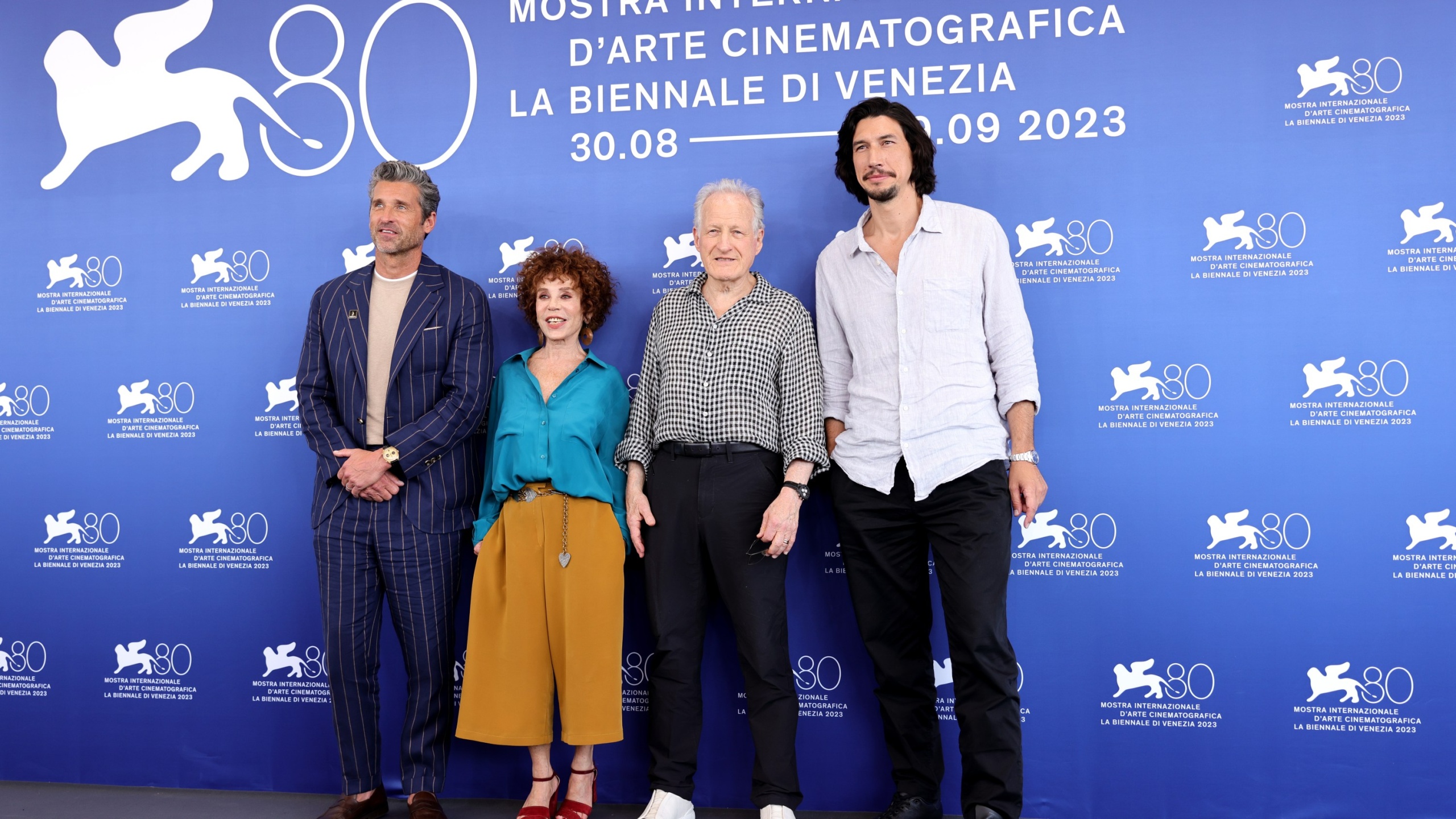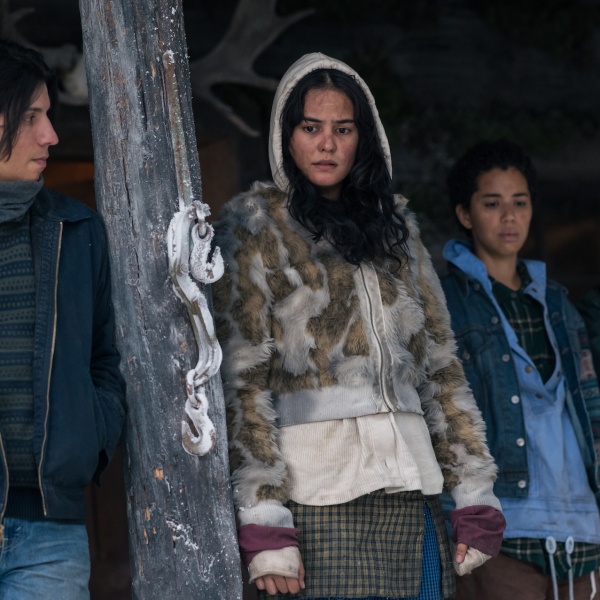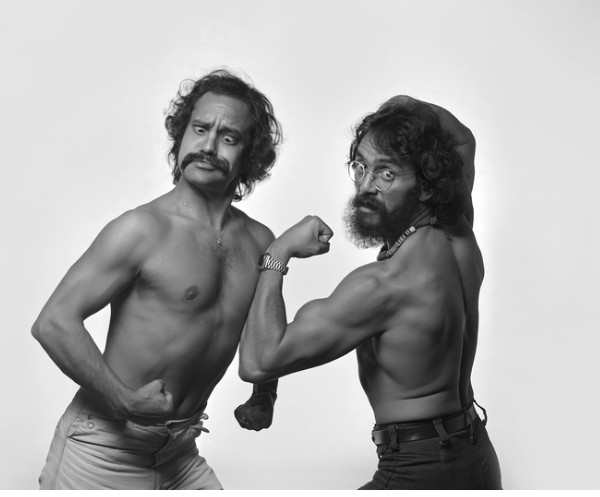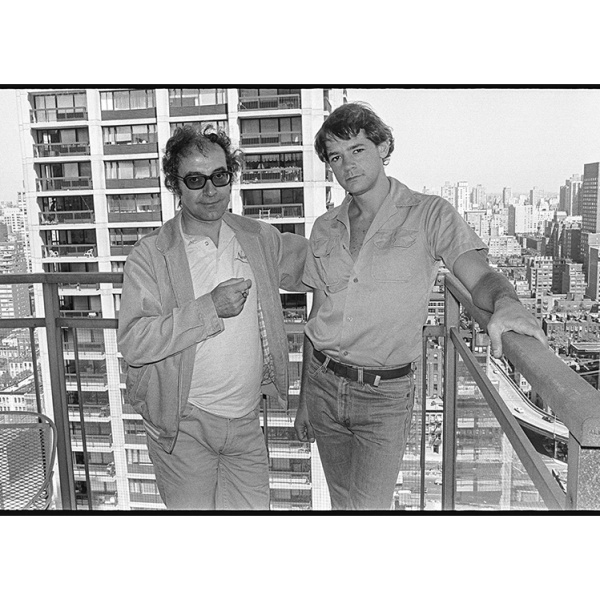Michael Mann is one of the top directors in Hollywood, long used to calling his own shots. When Joe Roth was running Disney Motion Pictures, he asked Mann if his “60 Minutes” expose “The Insider” with Russell Crowe and Al Pacino (1999) would make money. “Probably not,” Mann said. Roth made it anyway. It wasn’t a hit ($60 million worldwide), but it scored seven Oscar nominations, including Picture, Director, Actor, and Adapted Screenplay. Like many of Mann’s movies, it also gained stature over time.
But for all of Mann’s classic films, there are as many movies that didn’t get made in his oeuvre. It takes a lot for him to decide that he should expend the time and energy to go forward with a project, partly because his standards of performance are so high. For example, after directing four movies with high degrees of difficulty in a row (1992’s “The Last of the Mohicans,” 1995’s “Heat,” “The Insider,” and 2001’s “Ali”) Mann decided to pass “The Aviator” directing baton to Martin Scorsese. Why?
“I went to Martin and asked if he wanted to direct it because there’s a similarity between what Howard Hughes wants, and what Muhammad Ali wants,” said Mann. “And this is going to sound bizarre, but I felt I had just done this movie. Like, I couldn’t see doing a repeat of myself, because Ali is in conflict with himself to define who he should be, as the representative figure, to all those rising up from below, okay, and Howard Hughes is in conflict with his own mental disease, which he is trying to dominate. And I just had to decide if I’m going to direct this or not. And I decided there were two directors that I would go to and if they wanted to do it, and I’d produce it. Leo [DiCaprio] was involved from the get-go. And it was Marty, or Milos Forman. Plus at the time I had ‘Collateral,’ and the attraction for me was being able to go into one intense inside of a diamond, one compressed night in 12 hours. So that was the decision.”
Mann also walked away from making Ernest Hemingway’s Spanish Civil War epic “For Whom the Bell Tolls” which was, again, set to star DiCaprio in the role made famous by Gary Cooper. “I don’t know if it was the right decision or not,” said Mann, “but Leo and I were going to do ‘For Whom the Bell Tolls.’ And I was sitting in Miami at the time. I loved the David Benioff script. And Leo was set to do it, and it occurred to me that nobody wants to see this picture. So that was it and I decided not to pursue it. So then followed a sequence of phone calls from Warner Brothers, but I was resolute. I didn’t see it.”
It wasn’t not about seeking a huge hit. “It’s not just the marketplace, like, ‘Will this make $100 million’?” said Mann. “You do want people to see your movie. I make movies for audiences.”
Mann, who turned 80 in February, has long been attracted to the high stakes gamble of producing big-budget Hollywood movies about people trying to surmount high stakes. “Two things are true,” he said. “One, yes, I’m attracted to people who are trying to do something difficult and extraordinary. And secondly, doing things that are difficult and extraordinary, if it’s the right thing, very adventurous, why would you want to do anything else?”
And how did “Ferrari” (December 25, Neon) become the first movie Mann has directed since 2015’s “Blackhat”? Well, Mann was busy developing HBO series “Tokyo Vice,” and directing the pilot, which was interrupted by Covid. He also wrote “Heat 2,” the bestselling novel that served as a sequel to the movie “Heat.”
“Shooting the ‘Tokyo Vice’ pilot in Japan was fantastic,” said Mann. “It was a great adventure. I love Japan. I had no idea what it’d be like to direct Japanese actors who don’t speak English, and I don’t speak Japanese. And it was spectacular when I was working with Hideaki Ito or Ken Watanabe. And Ansel [Elgort] is so down for the cause and a committed actor. So they’re all adventures. Listen, I shot a Nike spot, it was a one-day shoot, but it’s sometimes equally as adventurous or ambitious.”

And then he prepared to make “Ferrari,” adapted by Troy Kennedy Martin from Brock Yates’ 1991 biography “Enzo Ferrari: The Man, the Cars, the Races, the Machine.” The movie went through several stars (Christian Bale and Hugh Jackman) and studios (Paramount, STX) since Mann started developing it in 2000, before landing on the current iteration led by Adam Driver as Ferrari, Penélope Cruz as his wife, and Shailene Woodley as his mistress.
“There was a compelling attraction to this,” Mann said. “It takes us in a very compressed time frame of three months [in 1957] behind the stoic surface of this icon, Enzo Ferrari, with that immobile expression and the sunglasses, deep into his personal life and the tumultuous passions and events and conflicts that all happened to be occurring right then and there. The marriage is falling apart with Laura, who owns half the company. They’re both in the state of grief, because of the death of [their son] Dino a year earlier, but they’re not connected and never will. He has a second family, started during the World War II, with another son who’s 12, seeking the acknowledgement of his father. And his company’s going broke because driving him is the passion of a race car driver, which is what he quintessentially is: building passenger cars only to finance the racing team. And the company’s going broke, and all this is happening at a time in which racing is a lethal sport. And all this is behind that surface image.”
Mann and his editor Pietro Scalia deftly balance the film‘s disparate elements: the marriage falling apart, the pressures from the mistress and the company going bankrupt, and the intense racing. “It’s difficult to execute,” said Mann. “But the planning is just being responsible to the content, to the action. There’s a specific design to the narrative in my mind, which is a character-driven, dialogue-driven story. And I wanted that to be stately and monochromatic, not black and white, but burnt umber, like the bedroom that Ferrari walks into, and static, because passionate, dramatic issues are going to get raised in all those dialogue scenes that aren’t going to be resolved in a race. When I go to the racing I wanted to counter with the exact opposite, which was the savage red cars slashing through the landscape with not just motion, but with an intense agitation.”

For Mann, it was about how he wanted the audience to experience the racing, as everything rides on Ferrari’s team winning the 1957 Mille Miglia. “I do not want them to experience as observers looking at very beautiful images,” he said, “with a long lens of a car snaking through a hilly landscape. I want the opposite, I want to put them in the driver’s seat. I want them to experience it, to be in there moving, having agitation happening to you while your focus is in Zen concentration, one and two turns ahead. That’s the experience of racing.”
We see Patrick Dempsey driving his car because he’s a skilled professional — he’s had a few podium finishes at Le Mans and drives for Porsche. The other actors all trained in racing, so that they would understand it, but didn’t actually drive the cars that much, especially if they were going fast.
The “Ferrari” camera team led by cinematographer Erik Messerschmidt figured out a camera rig for the cars, “with a lot of engineering, and a lot of ingenuity,” said Mann. “But we didn’t shoot it to make things look fast. We went fast. So those cars were going 120 to 130 miles an hour sometimes. And we engineered cameras systems that could move up the side of the car or come around, pan and everything else, and the cameras wouldn’t fall off. So that took a lot of doing. We built all those cars from scratch. What’s the chassis look like? What kind of suspension we’re going to drive?”

It’s not a stretch to suggest that Mann is tightly wound, or that he is an exacting taskmaster as a director: his cast and crew turn on a dime for him. Where does that perfectionism come from? “It’s internal,” he said. “It’s an artistic ambition. What does that mean? It means you imagined something, you dream it, you can see it, you could move through it, it’s so tangible in your imagination. And you want to achieve that imagined experience, the reality of being Frank in Chicago in “Thief,” the moment that Muhammad Ali leaves the road and all security and runs into that favela, and sees those iconic images on the wall, which then talk to him about, ‘this is how people see you all over the planet.’ So you’re trying to achieve the purity of the emotional realization in one’s imagination. To me, very personally and subjectively, that’s what that impulse is. So it doesn’t come from an external inspiration. There are people along the way that you say, ‘well look at Murnau’s film, look at Kubrick.’ I’ve worked with actors who also were driven pretty much the same way, most recently with Adam. So what that means is when we fall short, our biggest critics are ourselves.”
Driver and Cruz couldn’t give more opposite performances in “Ferrari.” He is stoic, quiet on the outside. She is operatic. “What’s great about the two characters, and Adam and Penelope, is that they are so totally different,” said Mann. “That’s what makes the relationship so interesting. So you have two people in these silos. She’s in the present and she’s imprisoned in the past, she could barely be contemporary with the now, ok? He’s in the present and only looking into the future. People say, ‘Enzo, what was your favorite car you ever built?’ ‘The next one.’ Everything’s the next, the new innovation. What makes Penelope’s Laura so compelling particularly for women from 30 on is a subterranean communal connection among women who lived life, who have had children, who had loss, who held a home together in the midst of adversity. I knew that the character was powerful. I knew the film we did was powerful. But I was pleasantly surprised by the degree which women and men relate to her character. What Adam is doing is totally different: the degree of difficulty to transform yourself into Enzo Ferrari is massive, how he moves, how he talks, how he walks, his language, how he uses his hands, how he steps and runs.”

Mann was most nervous when he showed the film to some 200 executives, mechanics, and drivers at Ferrari in Modena. (Michael Schumacher, the ex-chief Ferrari mechanic and Niki Lauda’s ex-chief mechanic play two of the mechanics that you see in the film.)”Here I am, from Chicago in Modena,” said Mann. “Showing this to these people, this is the world they live within. It’s very hermetic. Everybody was very complimentary about it. Actually, at one point someone baked me a cake!”
Next up: Having written the bestselling novel “Heat 2,” Mann is now in the middle of writing a screenplay based on the book.
Neon will open “Ferrari” in theaters on December 25.





